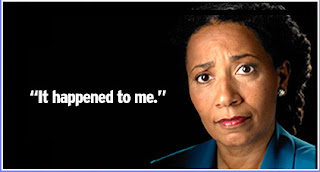
ATM skimming is a method used for stealing your identity during an ATM transaction. This method utilizes a credit card skimmer to collect, record and store your credit card number and pin number. The person "Skimming" your card can then use this information to program his own credit card with your information!
This skimming device, when placed on the ATM machine is virtually undetectable if you are not looking for it. It looks like a normal part of the ATM. And just when law enforcement agencies have gotten a handle on the technology being used by ATM skimmers, along comes a break through technology that is leaving even veteran investigators astounded. The first device discovered by an ATM user and obtained by authorities was taken to the CIA and they indicated they had not seen anything like it!
The method used included two devices. A type of skimmer placed over the card slot on the ATM accompanied by what appeared to be a speaker mounted on the ATM above the keypad. When the card was inserted, a device placed over the slot scanned the magnetic strip and the account information was sent (wireless ) to a modified cell phone hidden behind the fake speaker placed on the ATM above the keypad. A small camera concealed in the fake speaker would then record the pin number entered and stored it on a flash memory card.
The perpetrator would then steal a gift card that has not been activated and transfer the account information to the gift card via the magnetic strip thus turning it into an ATM card. This device has been credited with stealing in excess of $300,000 from peoples accounts in Pennsylvania!
In order to prevent being taken at the ATM, the obvious safeguards should be taken. Look for anything that just doesn't appear to belong, or looks out of place such as the fake speaker or a skimming device placed over the card slot. Also, when typing in your pin number, shield the keypad with your other hand in case there is a camera watching. Always check your bank statements or better still, apply for on line account monitoring with your bank so you can check instantly to see if someone has been in your account.
Article Source: http://EzineArticles.com/?expert=James_W_Albert




